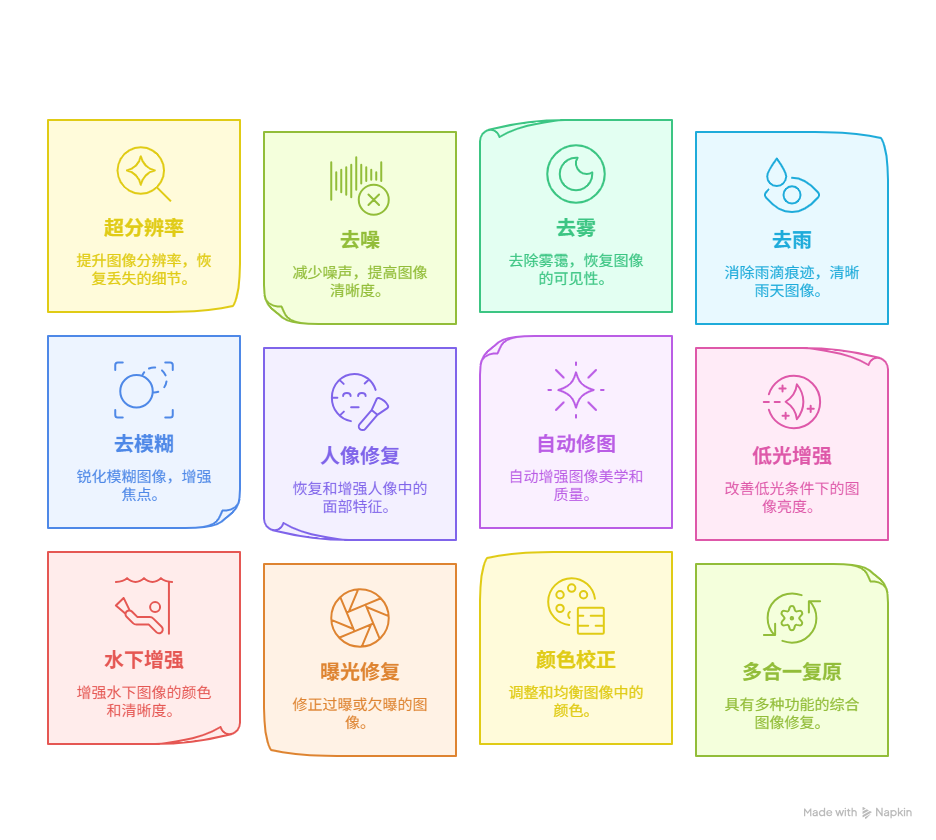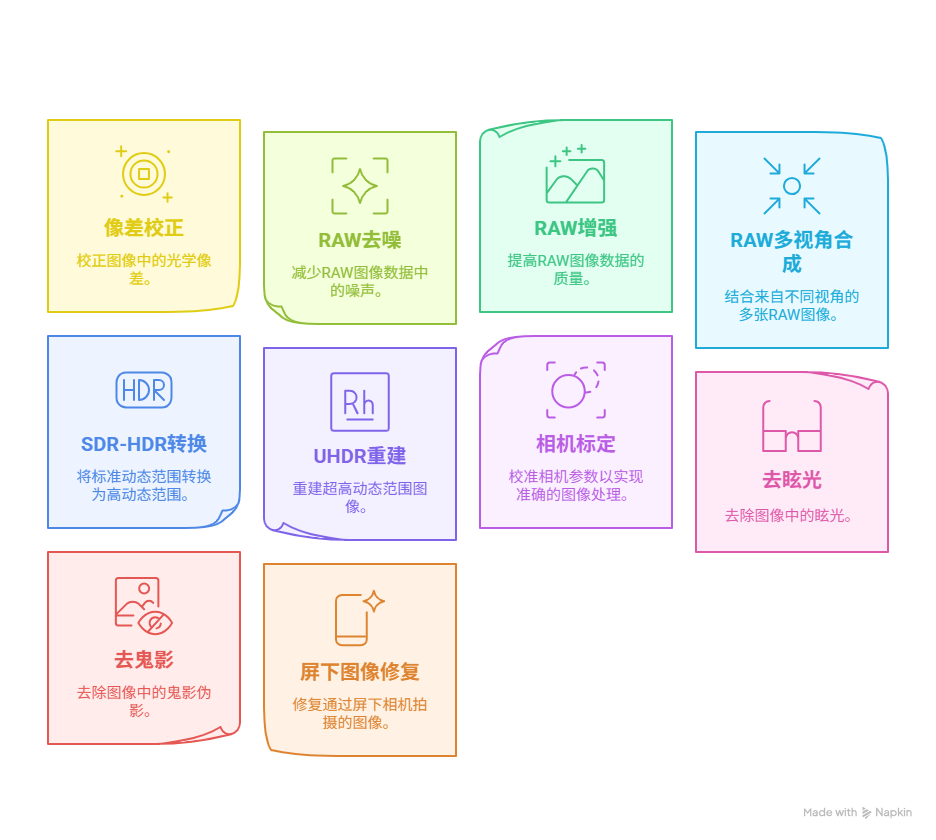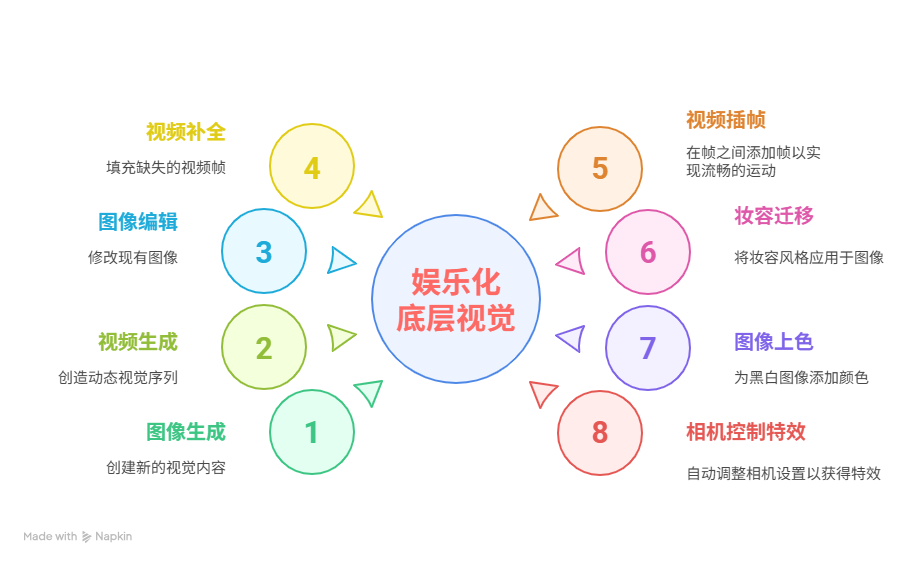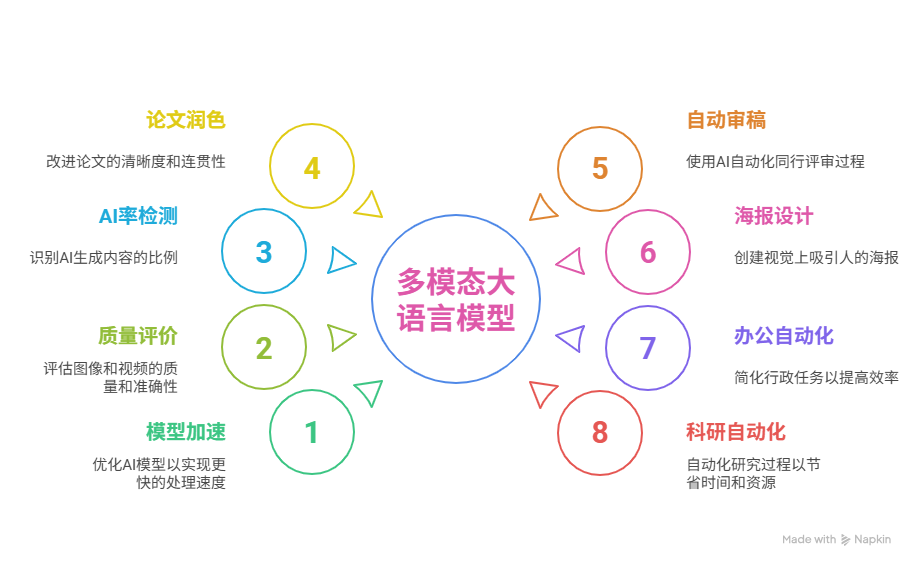


Universal image enhancement and restoration techniques are designed to significantly improve image quality across various applications. These methods address key issues such as super-resolution, denoising, dehazing, and rain removal, enhancing clarity and detail. Deblurring and face restoration restore sharpness and accuracy, while automatic photo retouching simplifies the enhancement process. Low-light enhancement and underwater restoration ensure high-quality visuals in challenging environments. Exposure correction and color correction refine lighting and hues for true-to-life representation. All-in-one restoration combines these solutions into a seamless toolset, enabling clearer, more accurate images for diverse industries, from healthcare to entertainment.
We focus on the research of super-resolution, denoising, deblurring, dehazing, deraining, face restoration, retouching, low-lignt enhancement, underwater enhancement, exposure correction, color correction, and all-in-one restoration.

Computational imaging techniques focus on optimizing image quality through advanced processing methods. Aberration correction enhances optical precision, while RAW denoising and RAW enhancement preserve and elevate original image details. RAW multi-view synthesis merges perspectives for richer, more dynamic visuals. SDR to HDR conversion and UHDR reconstruction unlock higher dynamic ranges, delivering stunning contrast and clarity. Camera calibration ensures accurate capture, while flare and ghost removal improve visual integrity. Under-display image restoration restores hidden details, offering a comprehensive approach to enhancing image capture and presentation in diverse applications.
We focus on the research of aberration correction, RAW denoising and enhancement, RAW multi-view synthesis, SDR2HDR, UHDR reconstruction, camera calibration, flare and ghost removal, and under-display image restoration..

Entertainment vision focuses on transforming and enhancing digital media for creative applications. Image and video generation bring new content to life, while image editing provides precise control over visual elements. Video inpainting and frame interpolation ensure smooth, seamless motion, enhancing visual flow. Makeup transfer enables realistic virtual makeovers, and image colorization brings black-and-white visuals to vibrant life. Camera control effects add dynamic, cinematic qualities to footage, offering a complete suite of tools for high-quality visual content creation and enhancement.
We focus on the research of image and video generation, image editing, video inpainting, frame interpolation, makeup transfer, image and video colorization, and camera control effects.

Multimodal large language models enhance a wide range of academic and professional workflows. Model acceleration boosts processing speed, while quality evaluation ensures the reliability of generated content. AI detection measures the involvement of AI in academic work, and paper polishing refines scholarly writing. Automated peer review streamlines the evaluation process, and poster design tools create professional visuals with ease. Office automation improves productivity, and research automation simplifies complex tasks, making the entire academic and professional process more efficient and effective.
We focus on the research of model acceleration, image quality assessment, AI rate detection, paper polishing, AI peer review, automatic poster design, office automation, and research automation.